 1995 Mitsubishi Carisma Dimensions, Size & Specs
1995 Mitsubishi Carisma Dimensions, Size & SpecsMeasurements of the 1995 Mitsubishi Carisma, engineered for optimal performance and comfort
| Dimensions | |
|---|---|
| Length: | 4435-4475 mm174.6-176.2 in14.6-14.7 ft |
| Width: | 1710 mm67.3 in5.6 ft |
| Height: | 1405 mm55.3 in4.6 ft |
| Trunk Capacity: | 460 liter16.2 cu ft |
| Trunk Capacity (Max): | 430-460 liter15.2-16.2 cu ft |
| Weight Specifications | |
| Curb Weight: | 1080-1265 kg2381-2789 lbs |
| Maximal permitted Weight: | 1610-1775 kg3549-3913 lbs |
| Tire Specifications | |
| Rims Sizes: |
|
| Tire Sizes: |
|
The Mitsubishi Carisma, produced from 1995 to 2003, is a stylish and practical sedan notable for its balanced dimensions and functional design. Measuring between 4435 mm and 4475 mm (174.6 to 176.2 inches) in length, 1710 mm (67.3 inches) in width, and standing at a height of 1405 mm (55.3 inches), the Carisma offers a comfortable and spacious cabin suitable for everyday family and business needs. The curb weight of the Carisma ranges from 1080 kg to 1265 kg (2381 to 2789 lbs), which reflects its well-considered structural build that balances sturdiness with efficiency. Maximum weight capacity varies from 1610 kg to 1775 kg (3549 to 3913 lbs), underscoring its capability to carry passengers and cargo with ease. In terms of storage, the Mitsubishi Carisma features a luggage compartment with a capacity of 460 liters (16.2 cubic feet), providing ample room for travel and transport. Even with the rear seats folded, the luggage space remains between 430 and 460 liters (15.2 to 16.2 cubic feet), demonstrating thoughtful space usage for various passenger and cargo arrangements. The Carisma supports rim sizes of 14 and 15 inches, paired with tire options including 195/60 R15, 185/70 R14, 185/65 R14, and 195/60 R14, allowing for versatile driving preferences and road conditions. Overall, the Mitsubishi Carisma of this generation is a well-rounded sedan that combines mid-sized vehicle comfort with practical utility, making it a choice contender in its class during its production years.
Discover the standout features that make the 1995 Mitsubishi Carisma a leader in its class
Have a question? Please check our knowledgebase first.
The Mitsubishi Carisma sedan produced between 1995 and 2003 has a length varying between 4435 mm to 4475 mm (174.6 to 176.2 inches), a width of 1710 mm (67.3 inches), and a height of 1405 mm (55.3 inches). These dimensions position it solidly within the compact sedan category, offering a balanced footprint that is neither overly large nor too small, suitable for urban driving and parking. The slight variation in length across different trims or model years might be due to design adjustments or optional equipment like bumpers or side protectors.
The curb weight of the Mitsubishi Carisma ranges between 1080 kg to 1265 kg (2381 to 2789 lbs), depending on the specific trim and equipment installed. The maximum weight capacity, which includes passengers and cargo, ranges from 1610 kg to 1775 kg (3550 to 3913 lbs). This indicates the car’s ability to carry a reasonable load while maintaining safety and performance standards, reflecting a balance typical for compact sedans of its era.
The Mitsubishi Carisma offers a luggage capacity of 460 liters (16.2 cubic feet) in the trunk with the rear seats upright, providing ample space for everyday needs such as groceries or luggage for a weekend trip. Interestingly, folding the rear seats does not significantly increase this capacity; it remains between 430 to 460 liters (15.2 to 16.2 cubic feet). This suggests the rear seats likely fold in a way that does not create a flat extended cargo area or that the measurement methodology considers only slightly more usable space.
Yes, the Mitsubishi Carisma fits comfortably into a standard residential garage. Standard single-car garage dimensions typically range around 2.4 to 2.7 meters (8 to 9 feet) in width and about 5.5 to 6 meters (18 to 20 feet) in length. With its maximum length of about 4.475 meters (14.7 feet), width of 1.71 meters (5.6 feet), and height of 1.405 meters (4.6 feet), the Carisma occupies less space than the typical garage size, allowing for easy parking and additional room for opening doors or storing small items.
The Mitsubishi Carisma was introduced in 1995 largely as a replacement for older Mitsubishi sedan models in Europe. Compared to its predecessor models, the Carisma generally offered a more modern and slightly larger compact sedan footprint, focusing on improved interior space and safety features. Its length, width, and height dimensions are competitive for compact cars of the mid-1990s, offering a more aerodynamic and contemporary design. However, exact predecessor comparison would depend on the specific model being replaced, which was often the Mitsubishi Colt or Galant variants in certain markets. The Carisma brought refined styling and more efficient use of interior volume.
In comparison to contemporaries like the Volkswagen Golf Mk3 sedan or the Opel Astra Sedan of the mid to late 1990s, the Mitsubishi Carisma sits comfortably within the compact sedan class. With a length around 4.4 to 4.5 meters and width of 1.71 meters, it is comparable to these models, though some alternatives may be slightly wider or longer depending on configuration. The luggage capacity of 460 liters is competitive, offering practical storage. Overall, the Carisma offers a nicely balanced size suitable for families needing moderate interior room and city maneuverability, with slightly more emphasis on aerodynamic styling than some boxier rivals.
The Mitsubishi Carisma typically comes equipped with rim sizes of 14 or 15 inches, with corresponding tire sizes such as 195/60 R15, 185/70 R14, 185/65 R14, and 195/60 R14. Smaller rim and taller tire sidewalls (like 185/70 R14) tend to offer a softer ride and some cushioning over rough roads, which is desirable for comfort in a compact sedan. Meanwhile, larger rims with lower-profile tires (195/60 R15) provide a sportier feel with improved handling responsiveness but may compromise ride softness slightly. Such versatile tire and rim options allow buyers to balance comfort or sportier driving characteristics depending on preference.
With a height of 1405 mm (55.3 inches), the Mitsubishi Carisma sits at a moderate height typical of compact sedans from its production period. This height helps balance interior headroom for passengers with an optimal center of gravity, which benefits driving stability. It also contributes to relatively easy entry and exit, as the car is not too low to the ground. Driver visibility is generally good, given the sedan's upright profile, supporting safe urban and highway driving experiences.
The curb weight of the Mitsubishi Carisma ranges from about 1080 kg to 1265 kg (2381 to 2789 lbs) depending on the trim, optional equipment, and engine choice. Lighter variants, often with smaller engines and fewer added features, tend to offer better fuel efficiency by requiring less power to move the vehicle. Heavier trims, which may include additional safety features, comfort options, or larger engines, typically show slightly higher fuel consumption. Overall, the Carisma maintained competitive fuel economy for its size and era by balancing weight and engine efficiency.
The Mitsubishi Carisma has a width of 1710 mm (67.3 inches), which is standard for compact sedans produced in the 1990s. This width provides enough shoulder room inside to comfortably seat passengers in the front and rear seats, contributing to a pleasant cabin environment on short and long trips. From a driving perspective, this width offers a good balance between maneuverability and stability. It is narrow enough to comfortably navigate tight city streets and parking spaces, yet wide enough to deliver steady road-holding characteristics at higher speeds.
Discover similar sized cars.

| Production: | 1982-1988 |
|---|---|
| Model Year: | 1983 |
| Length: | 4435-4460 mm174.6-175.6 in |
| Width: | 1690 mm66.5 in |
| Height: | 1369-1395 mm53.9-54.9 in |
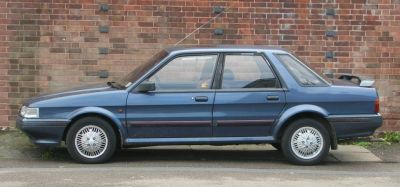
| Production: | 1984-1994 |
|---|---|
| Model Year: | 1984 |
| Length: | 4470 mm176.0 in |
| Width: | 1710 mm67.3 in |
| Height: | 1420 mm55.9 in |
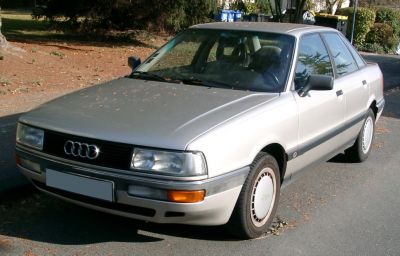
| Production: | 1987-1991 |
|---|---|
| Model Year: | 1987 |
| Length: | 4393-4478 mm173.0-176.3 in |
| Width: | 1695 mm66.7 in |
| Height: | 1371-1397 mm54.0-55.0 in |
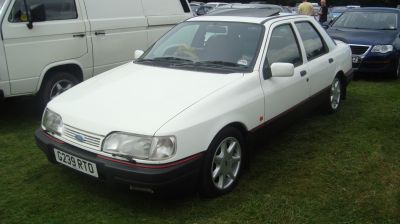
| Production: | 1987-1993 |
|---|---|
| Model Year: | 1987 |
| Length: | 4467 mm175.9 in |
| Width: | 1698 mm66.9 in |
| Height: | 1407 mm55.4 in |

| Production: | 1986-1996 |
|---|---|
| Model Year: | 1987 |
| Length: | 4430-4480 mm174.4-176.4 in |
| Width: | 1705 mm67.1 in |
| Height: | 1405 mm55.3 in |
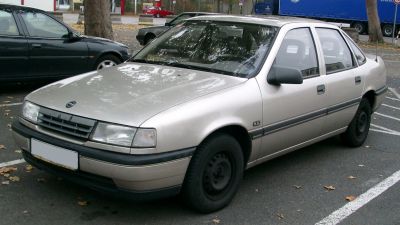
| Production: | 1988-1992 |
|---|---|
| Model Year: | 1988 |
| Length: | 4432 mm174.5 in |
| Width: | 1706 mm67.2 in |
| Height: | 1400 mm55.1 in |
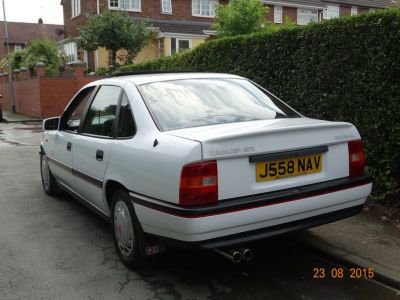
| Production: | 1988-1995 |
|---|---|
| Model Year: | 1988 |
| Length: | 4432 mm174.5 in |
| Width: | 1706 mm67.2 in |
| Height: | 1400 mm55.1 in |
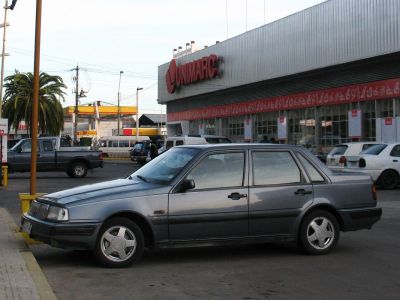
| Production: | 1989-1996 |
|---|---|
| Model Year: | 1989 |
| Length: | 4435 mm174.6 in |
| Width: | 1686 mm66.4 in |
| Height: | 1378 mm54.3 in |
